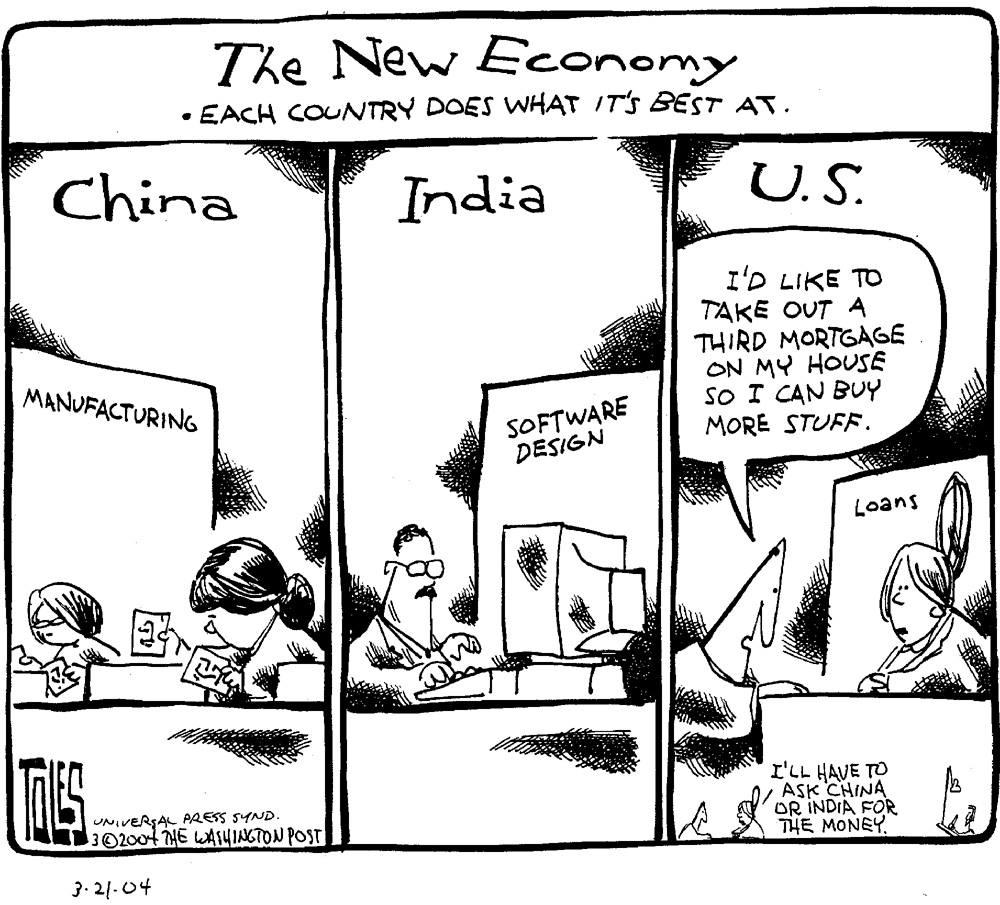Chapter Introduction
157
This chapter reviews GDP accounting and explains balance of payments accounting. It also introduces the concept of external wealth and discusses factors that will make it grow over time.
National and International Accounts: Income, Wealth, and the Balance of Payments
- Measuring Macroeconomic Activity: An Overview
- Income, Product, and Expenditure
- The Balance of Payments
- External Wealth
- Conclusions
Money is sent from one country to another for various purposes: such as the payment of tributes or subsidies; remittances of revenue to or from dependencies, or of rents or other incomes to their absent owners; emigration of capital, or transmission of it for foreign investment. The most usual purpose, however, is that of payment for goods. To show in what circumstances money actually passes from country to country for this or any of the other purposes mentioned, it is necessary briefly to state the nature of the mechanism by which international trade is carried on, when it takes place not by barter but through the medium of money.
John Stuart Mill, 1848
1. The importance of measuring economic transactions, both within and across borders
2. The chapter will explain the international system of trade and payments, emphasizing how trade in goods and services is mirrored by trade in assets.
In Chapter 13, we encountered George, the hypothetical American tourist in Paris. We learned about his use of exchange rate conversion—but how did he pay for his expenses? He traded some of his assets (such as dollars converted into euros, or charges on his debit card against his bank account) for goods and services (hotel, food, wine, etc.). Every day households and firms routinely trade goods, services, and assets, but when such transactions cross borders, they link the home economy with the rest of the world. In the upcoming chapters, we study economic transactions between countries, how they are undertaken, and the impact they have on the macroeconomy.
To that end, the first task of any macroeconomist is to measure economic transactions. The collection and analysis of such data can help improve research and policy-making. In a closed economy there are important aggregate flows to consider, such as national output, consumption, investment, and so on. When an economy is open to transactions with the rest of the world, there are a host of additional economic transactions that take place across borders. In today’s world economy these international flows of trade and finance have reached unprecedented levels.
158

Cross-border flows of goods, services, and capital are measured in various ways and are increasingly important subjects of discussion for economists and policy makers, for businesses, and for the well-educated citizen. There are debates about the size of the U.S. trade deficit, trade surpluses in emerging economies like China and India, the growing indebtedness of the United States to the rest of the world, and how these trends might be related to national saving and the government’s budget. To understand such debates, we must first know what is being talked about. What do all these measures mean and how are they related? How does the global economy actually function?
The goals of this chapter are to explain the international system of trade and payments, to discover how international trade in goods and services is complemented and balanced by a parallel trade in assets, and to see how these transactions relate to national income and wealth. In the remainder of the book, we use these essential tools to understand the macroeconomic links between nations.